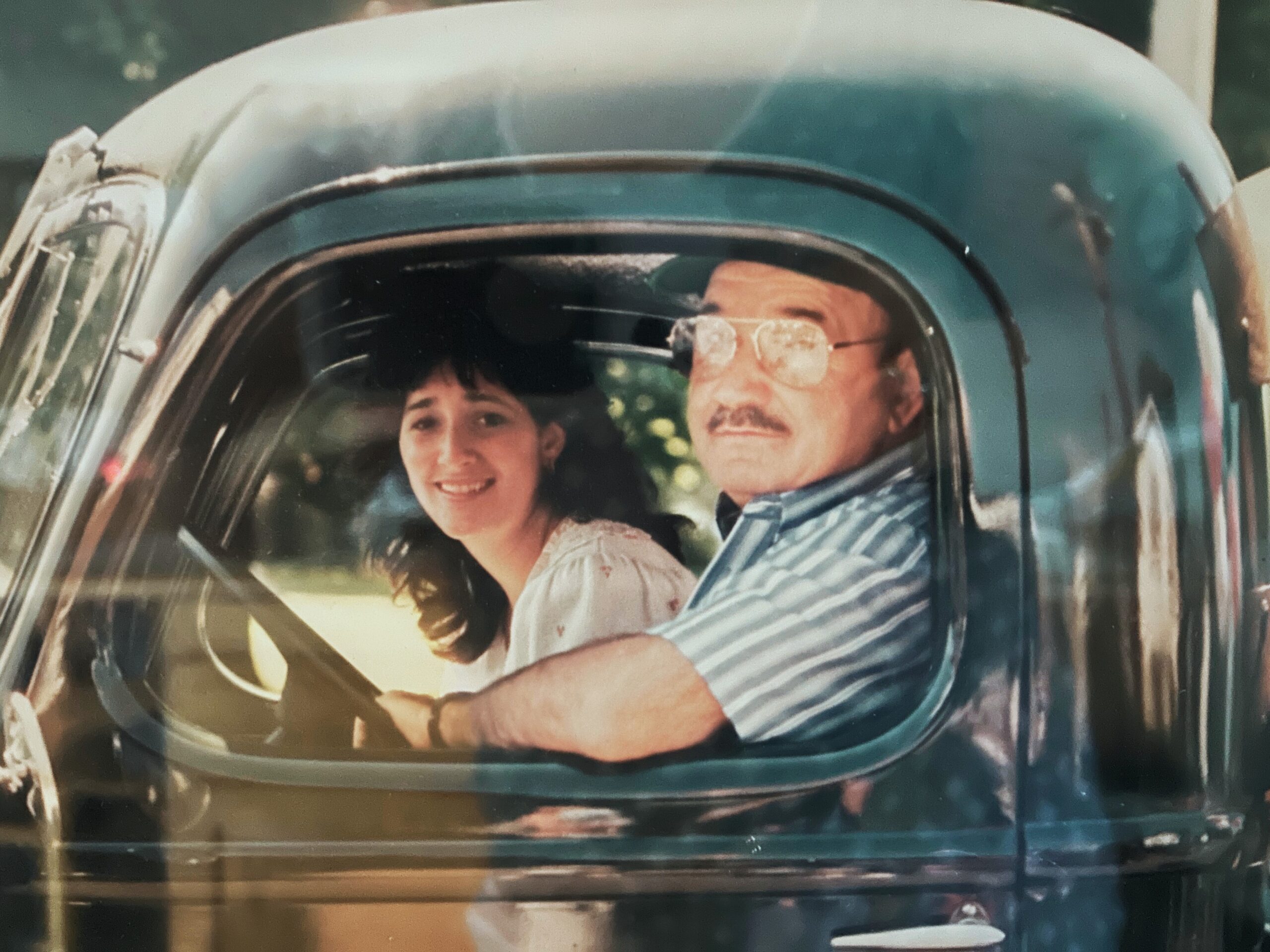Take a Peek Behind the Curtain with BTC: ‘Cinderella’s’ Original Scenic Element

Audio By Carbonatix
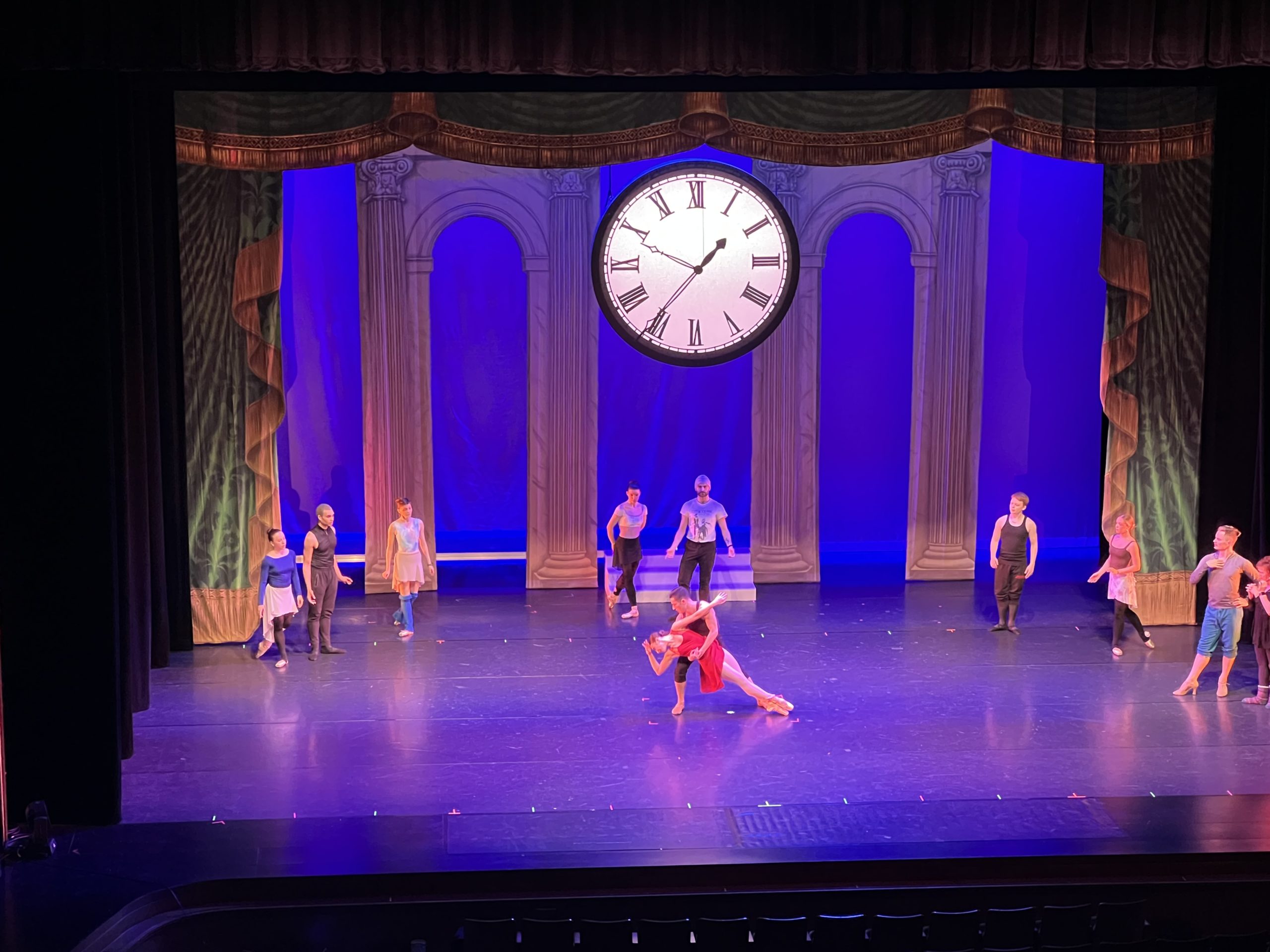
BTC dancers rehearse with the clock in the background. Courtesy photo
West Hartford’s Ballet Theatre Company, which will produce ‘Cinderella’ this weekend at The Bushnell, explains how some of the special effects are created.
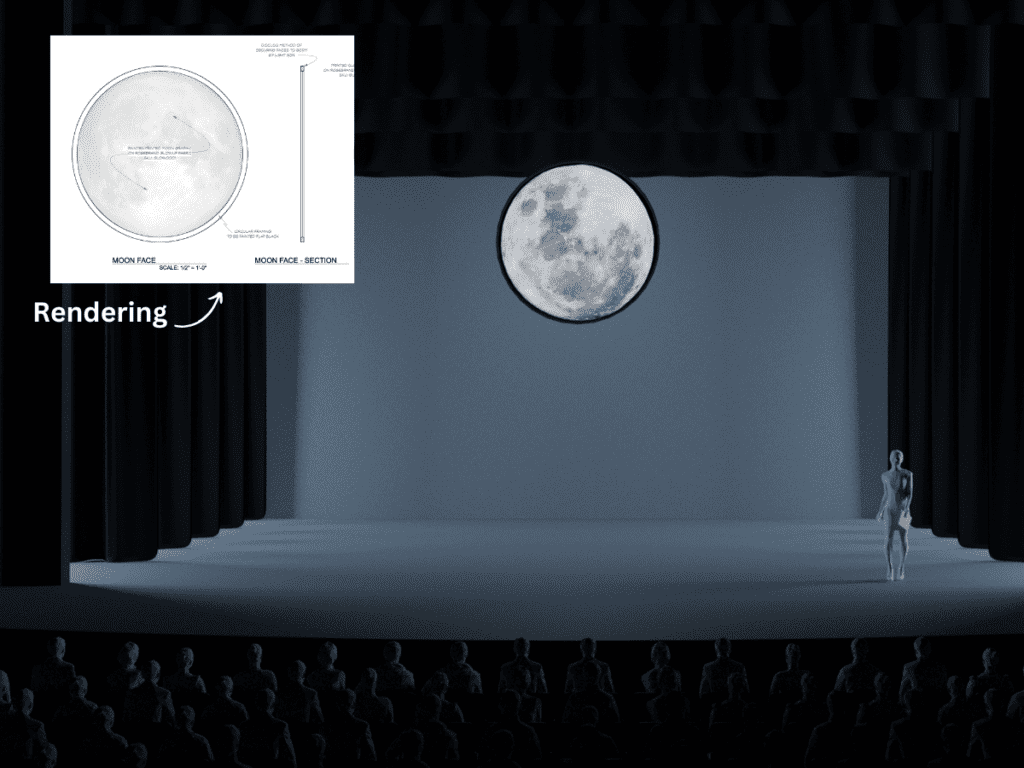
BTC is using a lightbox for a scenic element that doubles as the moon and clock for their performance of ‘Cinderella.’ Courtesy image
Submitted
Under the light of the moon, Cinderella’s Fairy Godmother bestows her with magic charms, transforming her tattered dress and shoes into an outfit fit for a princess. Before departing for the royal ball, the Fairy Godmother warns Cinderella that she must leave the ball before the clock strikes midnight, or the magic will fade away, revealing her true identity.
To capture this moonlit, magical transformation, and later, the iconic strike of midnight, choreographer Stephanie Dattellas collaborated with BTC’s Scenic Designer Jacob Sikorski to envision and produce a design that could double feature as a luminous moon and clock. Scenic fabrication of this design was provided by J. Pizzuti, a freelance technical director and carpenter working in the Boston area.
The resulting design is a circular light box 8 ft in diameter, with an interchangeable face. Each face, a moon and a clock, is screen printed on Rosebrand Glowup fabric and attached to the light box with a series of short threaded rods and wingnuts so that we may easily and safely swap the patterns of the face. To transform the moon into the clock when Cinderella arrives at the ball, the stage crew removes the moon face and replaces it with the clock face during the ballet’s intermission.
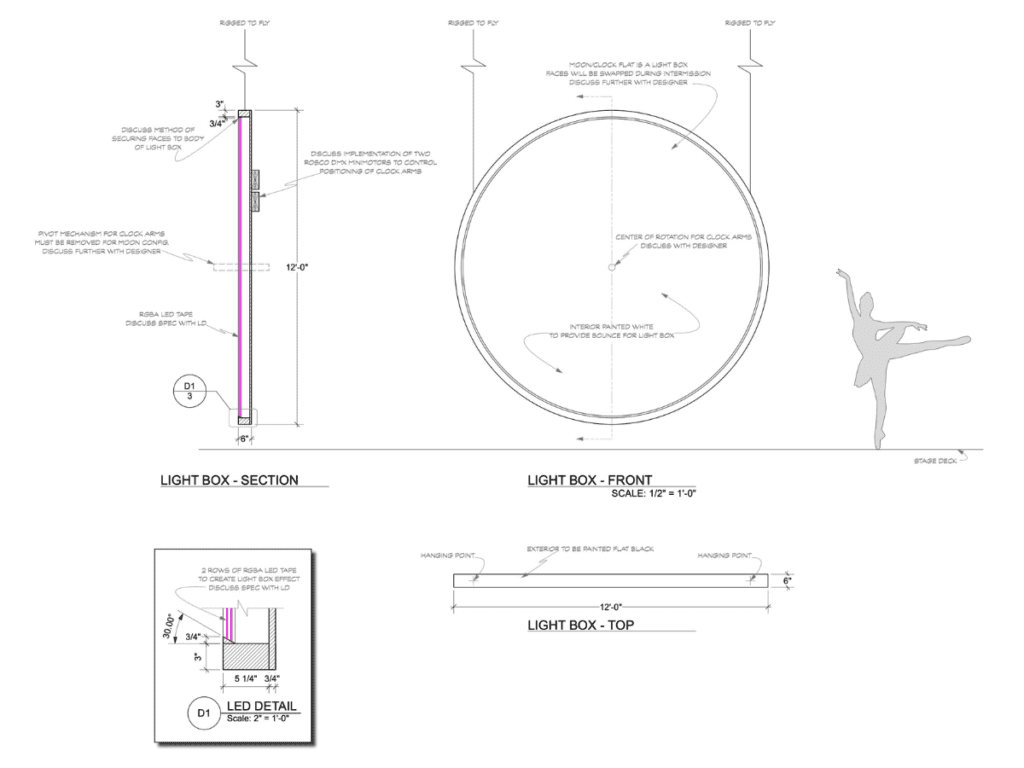
BTC is using a lightbox for a scenic element that doubles as the moon and clock for their performance of ‘Cinderella.’ Courtesy image
The moon appears in Act I, during the “Seasons” scene, when the Fairy Godmother helps Cinderella get ready for the ball. The Fairy Godmother calls upon her troop of fairies: Spring, Summer, Fall, and Winter, to transform Cinderella from rags to riches and fulfill her dream of attending the Royal Ball.
The Spring Fairy transforms her torn dress into a beautiful, glittering ball gown. The Summer Fairies bring Cinderella a sparkling crown to adorn her head. The Autumn Fairy brings a pumpkin, which she magically transforms into a carriage to transport Cinderella to the ball. Lastly, the Winter Fairy presents Cinderella with shimmering, glass slippers to complete her dazzling transformation.
As each of the fairies present their gifts and the Fairy Godmother coordinates Cinderella’s magical transformation, the moon shines bright overhead, transporting the audience to a mystical, outdoor fantasy world.
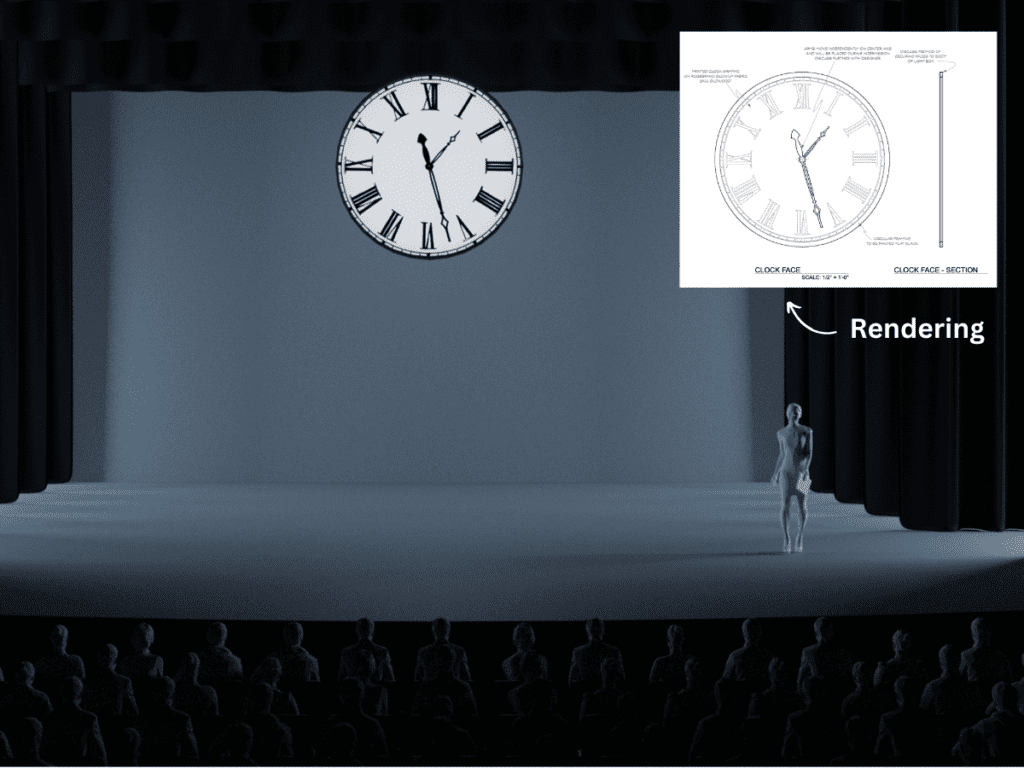
BTC is using a lightbox for a scenic element that doubles as the moon and clock for their performance of ‘Cinderella.’ Courtesy image
As the curtain lifts for Act II of the ballet, and the Royal Ballroom is revealed, the audience’s eye is immediately drawn to the moon, which has now transformed into a large clock suspended over the room. Like the moon, the clock is a key element in transporting the audience into the lavish ballroom scene, while also serving as a reminder of the Fairy Godmother’s warning in Act I. As Cinderella, the Prince, and fellow guests of the ball waltz through the evening, the clock peers over them, indicating the passing time. The clock takes its full form at the iconic strike of midnight, illuminating the darkened ballroom as Cinderella’s panic sets in and the magic begins to wear off, threatening to expose her tattered dress and true identity.
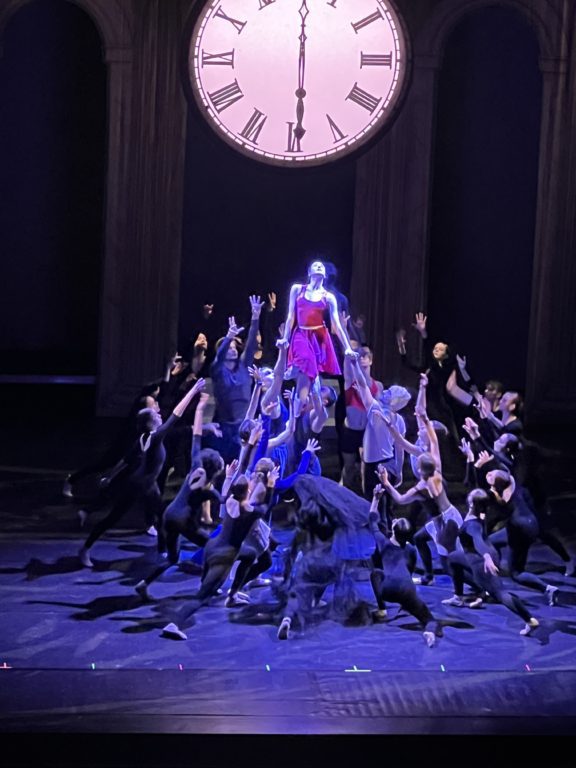
BTC dancers rehearse with the clock in the background. Courtesy photo
Choreographer Stephanie Dattellas was interested in highlighting Prokofiev’s score for the strike of midnight through the use of abstract shapes, formations and movement. She aimed to balance imagery and an air of mystery while also emphasizing the poignant beat of a ticking clock hand. Dattellas envisioned the scene with shadows, representing the ball guests, swarming in from the corners of the ballroom and surrounding Cinderella, leaving her frantic and trapped in her own mistake. Throughout the scene, various characters are featured through a series of lifts and formation changes, highlighting the different relationships that Cinderella has developed through the storyline.
While the light box itself functions as both a moon and a clock, our clock face also must display multiple times of day. One time being the magical deadline of midnight and another for when we initially see the clock. Along with the light box and faces, J. Pizzuti built two sets of clock hands that can be changed live during the show. These hands are hung from pipes that are part of the Belding Stage rigging system, allowing them to be flown in and out like our many backdrops and other scenery.
More information about BTC’s production of “Cinderella” can be found here.
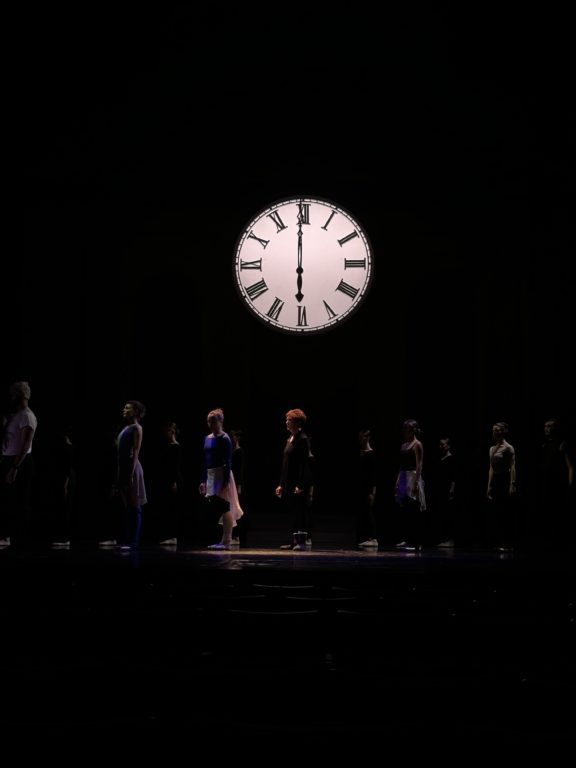
BTC dancers rehearse with the clock in the background. Courtesy photo
Like what you see here? Click here to subscribe to We-Ha’s newsletter so you’ll always be in the know about what’s happening in West Hartford! Click the blue button below to become a supporter of We-Ha.com and our efforts to continue producing quality journalism.



